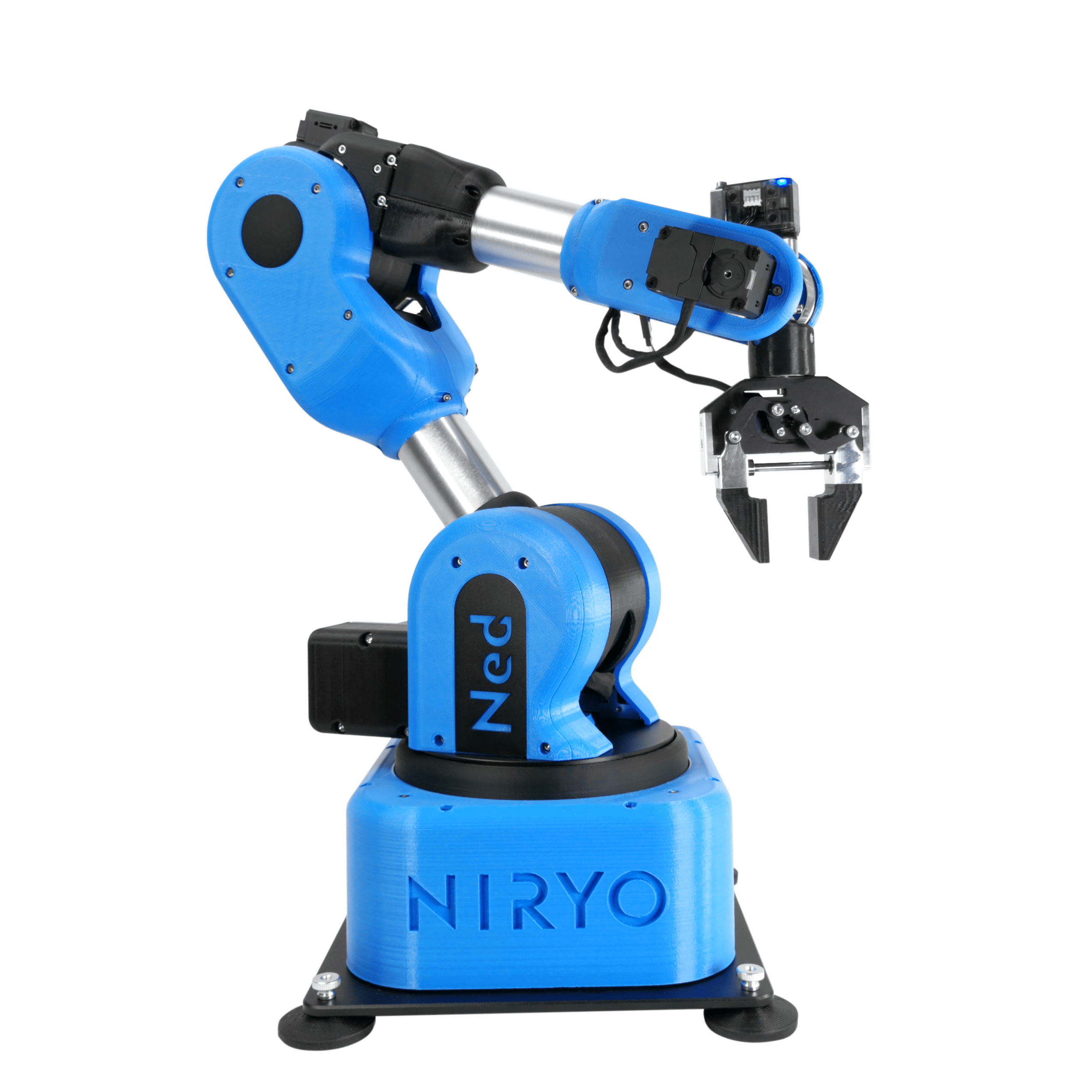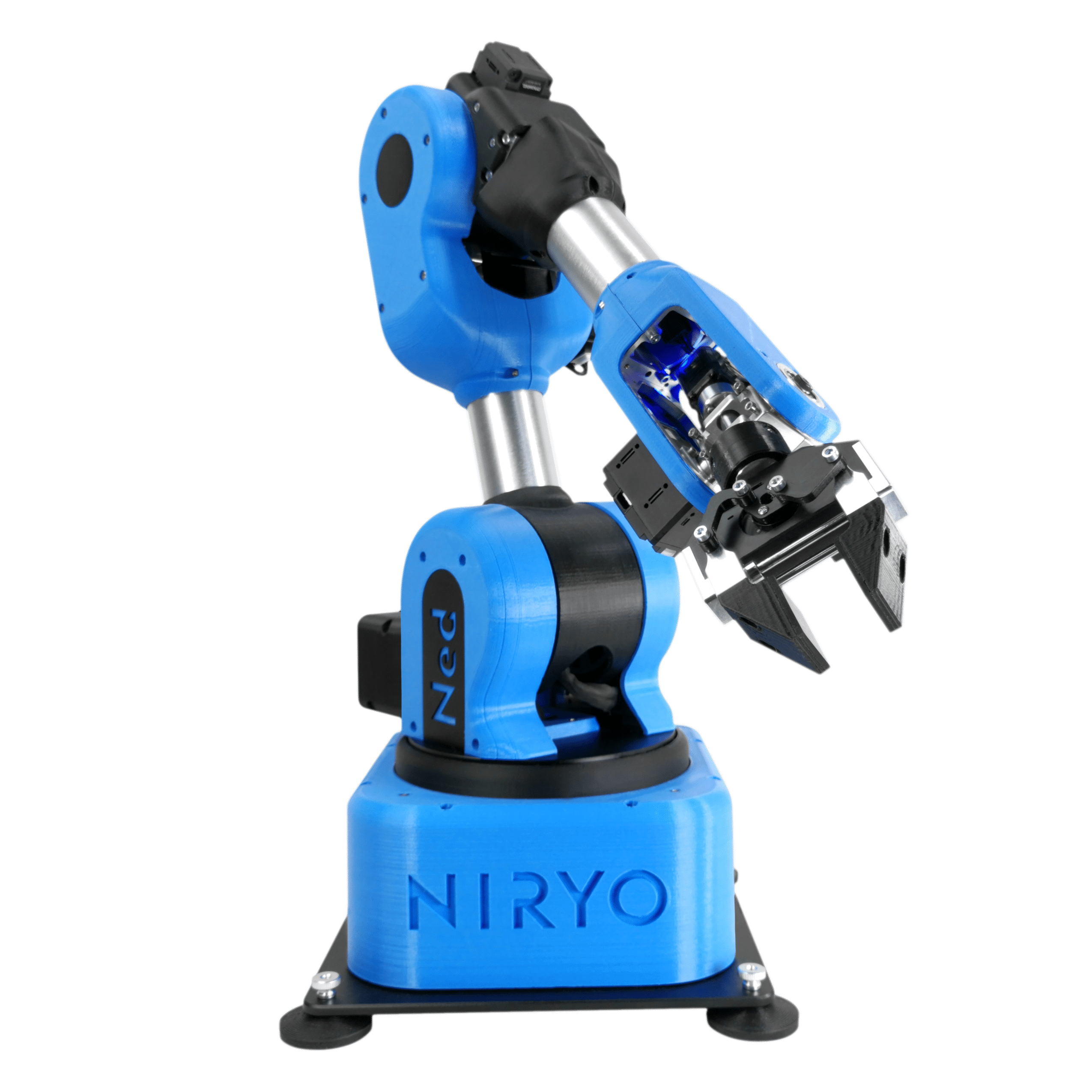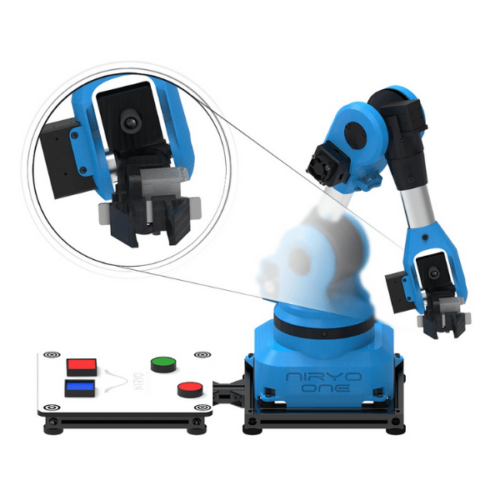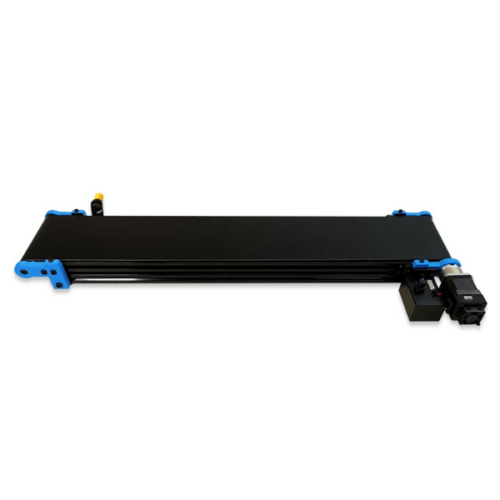Description
Technical Specifications
| Specification | Value |
|---|---|
| Number of axis | 6 |
| Weight | 6.5 kg |
| Payload | 300 g |
| Max Reach | 440 mm |
| Base joint range | +/- 175 ° |
| Repeatability | 0.5 mm* |
| Power Supply | 11.1 Volts / 6A |
| Communication | Ethernet 1 Gb/s, WIFI: 2.4 GHz & 5GHz – Range 802.11n, Bluetooth 5.0 BLE, USB |
| Interface/Programming | Windows/MacOS/Linux (desktop application), Gamepad, APIs |
| Power consumption | ~ 60 W |
| Materials | Aluminium, PLA (3D printing) |
| Ports | 1 Ethernet + 2 USB 3.0 + 2 USB 2.0 |
| Hardware | Raspberry pi 4, + 3 x NiryoSteppers, + 2 x Dynamixel XL – 430, + 1 x Dynamixel XL – 320 |
| Collision detection sensor | Magnetic sensor (on motor) |
*Niryo One is a robot primarily made for educational purposes, and testing of small assembly lines. We do not
guarantee any precision and robustness over time for your application.
Design
Ned is designed to reproduce all the movements required for the most advanced uses with a precision and repeatability of 0.5mm.
Its aluminum structure allows the cobot to perform the movements required by your robotic projects with fluidity.
The collaborative robot Ned takes full advantage of the capabilities of the Raspberry Pi 4, with a high-performance 64-bit ARM V8 processor, 2Gb of RAM, and improved connectivity.
Ned is a cobot based on Ubuntu 18.04 and ROS (Robot Operating System) Melodic, a complete open-source solution designed for robotics.
With ROS, Ned has a set of libraries to design programs from the simplest to the most complex to meet your needs in a flexible way.
Uses
By using Ned for education or research, you benefit from a collaborative robot with applications that are faithful to the industrial reality:
- Using a visual programming method for the simplest processes (Blockly, similar to Scratch),
- Creating programs to carry out more complex processes, whether it is robotic programs designed for one robot, multi-robot, artificial intelligence for vision, IoT…
- Prototyping complete industrial scenarios such as “pick & place” (taking an object to move it), “pick & pack” (taking an object to insert it into a packaging) …
Ecosystem
Ned fits perfectly into the ecosystem (not included) designed for Industry 4.0:
- The Conveyor Belt allows you to prototype processes involved in production lines and can be controlled by Ned or autonomously,
- The Vision Set and its onboard camera directly on the robot’s wrist allow Ned to perform tasks with image recognition. Define your workspace with markers and benefit directly from advanced image processing functions for Industry 4.0.
Tools
Ned comes with a Custom Gripper, which allows you to manipulate many different objects. Its standard jaws allow you to catch many medium-sized objects, and it is possible to change them for those of your choice:
- The jaws pack (not included), which consists of 3 different sets of jaws (XL, Flat, Precision), allows you to manipulate new types of objects.
- If you own a 3D printer, you can create your own jaws to match your projects.
With the EasyConnect system, changing tools has never been so easy: in a few seconds, Ned is able to manipulate new objects (with a Vacuum Pump, a Large Gripper, an Adaptive Gripper and an Electromagnet) (not included).
How to control Ned?
- Activate the robot learning mode to manually position the robot and teach it positions to be reproduced. Controlling Ned can be as simple as pressing a button.
- With Niryo Studio, our free desktop application, use blocks to create your robotic programs. Based on Blockly (similar to Scratch), our visual programming interface allows you to quickly and easily create robotic programs without any computer development knowledge.
- Use an Arduino or a Raspberry Pi to control the robot via its digital inputs/outputs (tutorial).
- Advanced users: develop your own controller (use a mouse, keyboard, joystick or Leap Motion to control Ned according to your preferences), use different languages and APIs (Python, C++, MATLAB, Modbus, TCP/IP…) to control the robot directly or remotely, or dive directly into the ROS code, which is open-source.






